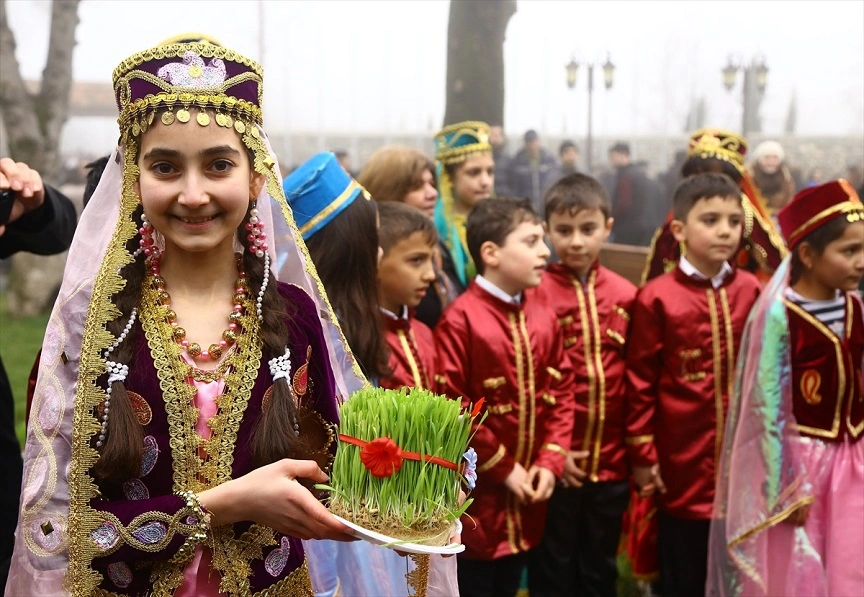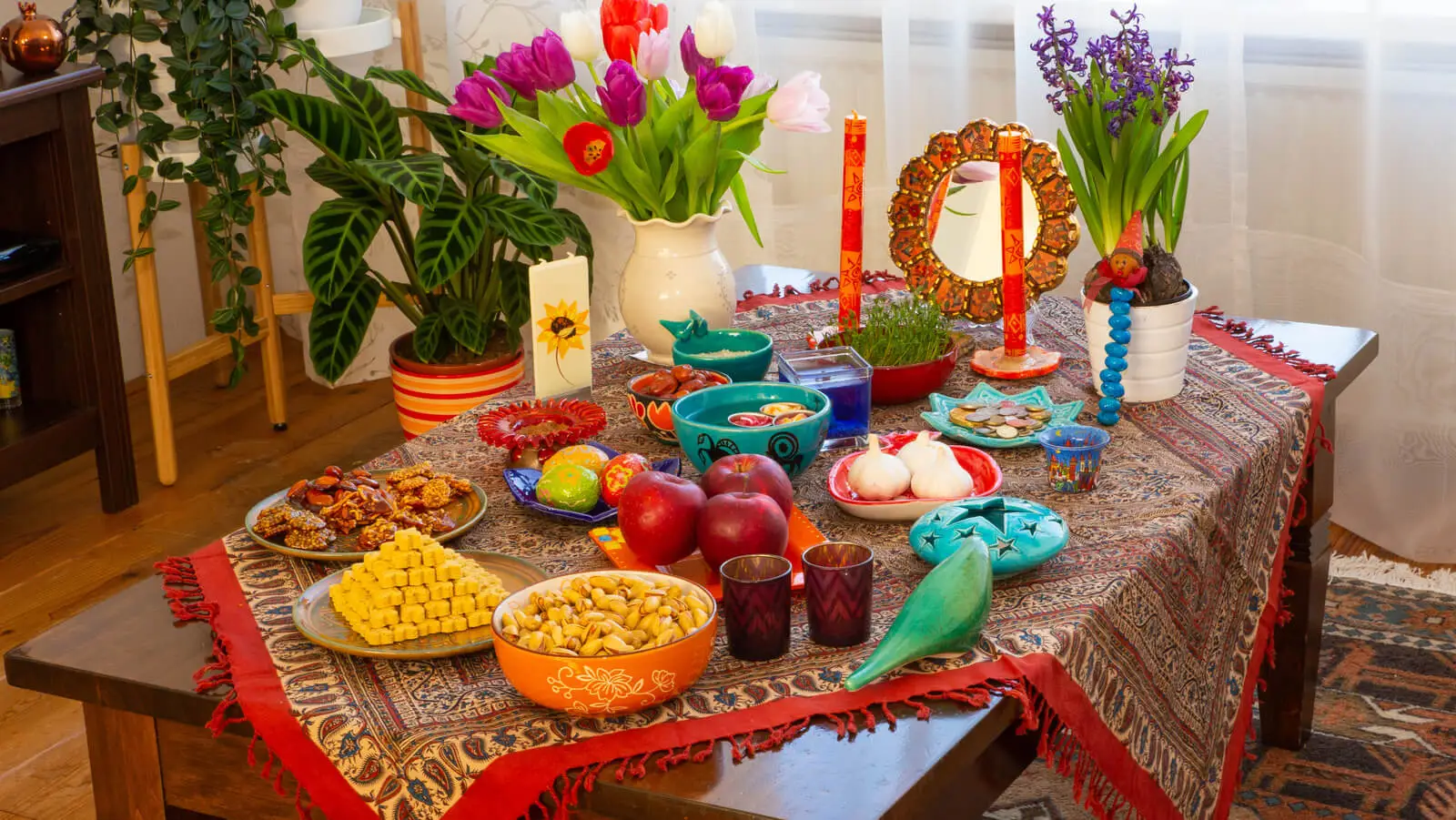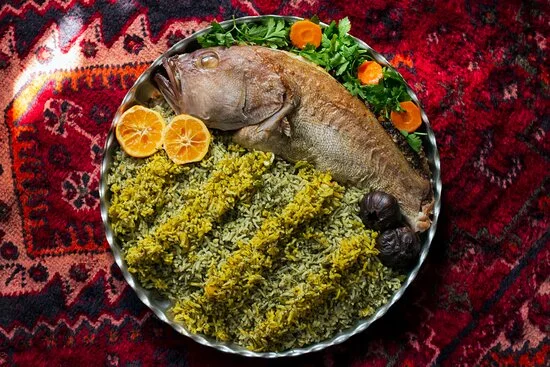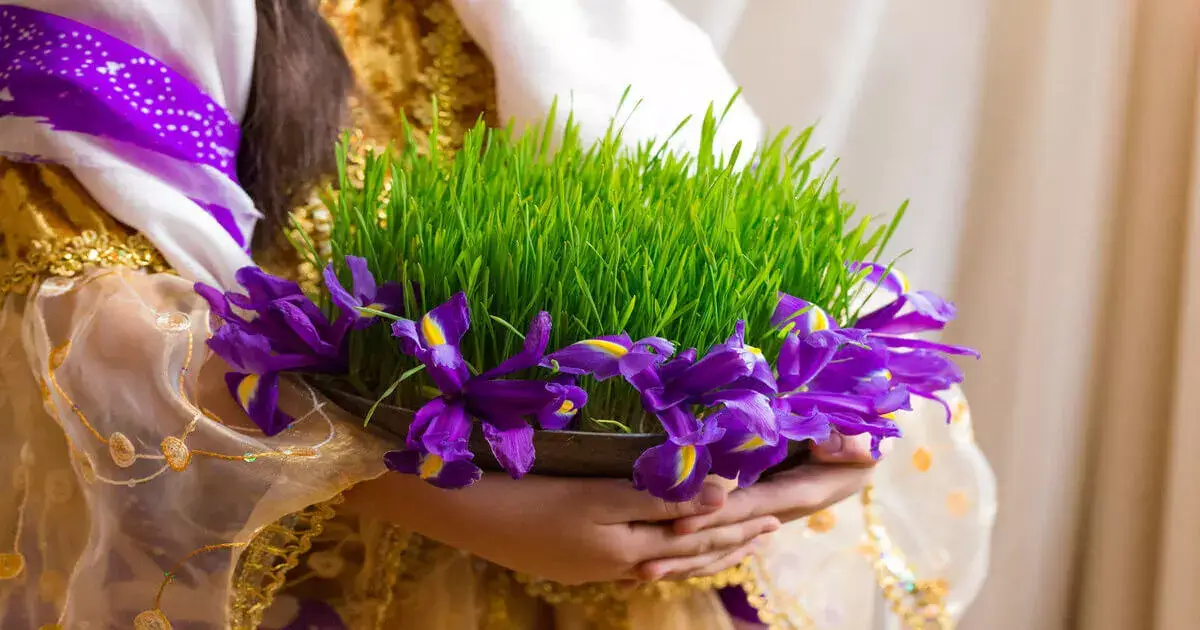Nowruz, which means “new day” in Persian, is the Iranian New Year celebrated on the first day of spring. It is a significant cultural and religious holiday in Iran and is also celebrated by millions of people of Iranian descent around the world. Nowruz is a time of renewal, as families gather to clean their homes, prepare delicious traditional meals, and decorate their homes with flowers and other symbolic items. It is a time of joy and hope, as people welcome the New Year with open arms and look forward to a fresh start. In this article, we will explore the history and traditions of Nowruz in Iran, its significance, and how it is celebrated today.
When Persian New Year is celebrated?
Nowruz, is celebrated on the first day of spring in the Northern Hemisphere, which usually falls on March 20th or 21st. However, the exact date and time of the New Year are determined by the astronomical calculation of the moment of the vernal equinox.
In which countries Nowruz is celebrated?
Nowruz is an ancient Iranian tradition that dates back more than 3,000 years and is celebrated not only in Iran but also in many other countries, including Afghanistan, Tajikistan, Azerbaijan, Kazakhstan, Kyrgyzstan, Turkmenistan, Uzbekistan, Iraq, Turkey, Albania, Bosnia and Herzegovina, Georgia, Kosovo and parts of India and Pakistan. Each of these countries has its own unique traditions and customs associated with Nowruz, but the holiday is generally celebrated as a time of renewal, joy, and hope for the New Year.

How do Iranians celebrate Nowruz?
1. Preparing for Nowruz
In the weeks leading up to Nowruz, Iranians engage in a thorough spring cleaning of their homes. They clean every corner of the house, wash all the windows, and get rid of any unnecessary clutter. This tradition is a symbol of renewal and starting the New Year with a clean slate.
2. New Year Shopping
Iranians do a lot of shopping in preparation for Nowruz. They buy new clothes, shoes, and household items, such as curtains and rugs. It is also customary to buy new gold coins to give as gifts during the holiday.
3. New Year’s Day
On New Year’s Day, Iranians typically dress in new clothes and gather with their families to enjoy a festive meal. It is customary for Iranians to visit the graves of their loved ones on New Year’s Day, to pay their respects and offer prayers for the deceased.
Haft-Seen Table
Haftseen table is an important part of Persian New Year, also known as Nowruz. Haftseen means “seven S’s” and refers to a traditional table setting that includes seven items, each beginning with the Persian letter “sin” (س), which symbolizes the arrival of spring and the rebirth of nature.
The seven items of Haftsin typically include:
- Sabzeh (سبزه) – wheat, lentil or barley sprouts growing in a dish, representing rebirth and renewal.
- Samanu (سمنو) – a sweet pudding made from sprouted wheat, symbolizing affluence and fertility.
- Senjed (سنجد) – dried fruit from the lotus tree, representing love and affection.
- Seer (سیر) – garlic, representing medicine and good health.
- Seeb (سیب) – apples, representing beauty and health.
- Serkeh (سرکه) – vinegar, representing age and patience.
- Somagh (سماق) – sumac berries, representing the color of the sunrise and new beginnings.
Additional items that may be included on the Haftseen table include mirrors, candles, coins, and poetry books. Each of these items has its own symbolic meaning and significance.
The Haftseen table is typically displayed in the home during the Persian New Year holiday, which lasts for 13 days. It is a way for families and friends to gather together, share meals, exchange gifts, and celebrate the arrival of spring and the start of a new year.

5. Gift Exchange
Gift-giving is an important tradition during Nowruz, the Persian New Year, and is a symbol of love, respect, and appreciation. Iranians exchange gifts with their loved ones, including family members, friends, and neighbors. The most common gifts are gold coins, which are a symbol of wealth and good fortune. Other popular gifts include flowers, sweets, and traditional handicrafts. Children often receive new clothes and toys as gifts. The gift-giving tradition is reciprocal, meaning that the receiver of a gift is expected to give a gift in return. This exchange of gifts strengthens social ties and reinforces the sense of community during the holiday season. Overall, gift exchange is an important part of Nowruz, and is a way for Iranians to show their love and appreciation for their friends and family members.
6. Chaharshanbe Suri
Charshanbe Suri, also known as the Iranian Fire Festival, is a prelude to the Persian New Year, Nowruz. Celebrated on the eve of the last Wednesday of the Persian calendar year, Charshanbesoori is a time when Iranians gather with family and friends to jump over bonfires and light fireworks. The tradition is believed to have originated from Zoroastrianism, the ancient Persian religion, and symbolizes the purification of the body and soul from the previous year’s misfortunes and impurities. Charshanbesoori is also a time for feasting, with families preparing traditional foods such as ash-e-reshteh, a soup made with beans, noodles, and herbs. In recent years, the celebration of Charshanbesoori has become a popular event in cities and towns throughout Iran, with local authorities organizing public festivities and fireworks displays.
7. Visiting family and friends
Visiting family and friends during the Nowruz holidays is an important tradition in Iran. Many Iranians who live abroad return home during this time to celebrate with their loved ones. The holiday season lasts for 13 days, during which time people gather together to share meals, exchange gifts, and participate in various cultural activities. The Haftseen table is an important part of the celebrations, and families take great pride in preparing their own unique displays. Many families also take the opportunity to travel together to other parts of the country to visit relatives and explore the sights and sounds of the holiday. For Iranians, Nowruz is a time of renewal, hope, and joy, and there is no better way to experience this spirit than by spending time with family and friends.
8. Sizdah Bedar
Sizdah Bedar, also known as Nature Day, is the thirteenth day of the Persian New Year, Nowruz, and is celebrated on April 2nd. It is a time when Iranians spend the day outdoors, having picnics, and enjoying nature. Sizdah Bedar is a tradition that dates back thousands of years and is believed to bring good luck and prosperity for the New Year. Iranians believe that spending time in nature on this day will help them rid themselves of bad luck and negative energy from the previous year. Many families prepare special foods for the picnic, such as kebab, rice, and salads. It is also customary to bring along a sabzeh, a sprouted wheat or lentil dish, which is later thrown into a river or stream to symbolize the return of nature to the earth. Sizdah Bedar is a time for Iranians to connect with nature and appreciate the beauty of the world around them, and is a beloved tradition that is celebrated throughout the country.

What foods are eaten at Persian New Year celebrations?
There are several traditional foods that are commonly served during Nowruz, the Persian New Year holiday. Some of these foods represent different symbols of the holiday and are believed to bring good luck and prosperity in the coming year. Here are a few examples:
1. Sabzi Polo Mahi
This is a popular dish made with basmati rice, herbs (such as parsley, cilantro, and dill), and fish. The green herbs in the dish represent the rebirth of nature and the fish symbolizes life.
2. Reshteh Polo
This is a flavorful dish made with basmati rice and thin noodles, served with saffron, raisins, and dates. It is believed to bring happiness and sweetness to the New Year.
3. Ashe Reshteh
This is a hearty soup made with beans, vegetables, and noodles. It is often served during the first day of Nowruz and is believed to bring good luck and prosperity.
4. Dolmeh Barg Mo
This is a popular stuffed grape leaves dish, filled with a mixture of meat, rice, and herbs. It is a traditional dish for Nowruz and is believed to bring good fortune.
5. Kookoo Sabzi
This is a type of herb omelet made with a variety of herbs, such as parsley, coriander, and dill. It is a flavorful dish that is often served during Nowruz.
6. Samanu
A sweet pudding made from sprouted wheat, symbolizing affluence and fertility.
7. Shirin Polow
A sweet and aromatic rice dish made with saffron, orange peel, sugar, and almonds. These are just a few examples of the traditional foods that are commonly eaten during Persian New Year celebrations.
These are just a few examples of the traditional foods that are commonly served during Nowruz in Iran.

Do Christians celebrate Nowruz?
Nowruz is a cultural and national holiday that is primarily celebrated by followers of the Zoroastrian faith and people of Iranian descent. However, it is worth noting that many Iranians, regardless of their religious affiliation, celebrate Nowruz as a cultural tradition. While Christians in Iran may not celebrate Nowruz as a religious holiday, they may still participate in some of its cultural traditions, such as gathering with family and friends, decorating their homes, and preparing traditional meals. It is important to note that Iran is a diverse country with many different religious and cultural traditions, and the celebration of Nowruz may vary depending on the region and the background of the individuals celebrating it.
How Christmas is celebrated in Iran?
In a nutshell
Nowruz, the Persian New Year, is an ancient tradition that has been celebrated for more than 3,000 years. It is a time of renewal, joy, and hope, and is celebrated in many countries around the world. The holiday marks the beginning of a new year and the start of the spring season, and is a time for families to come together, exchange gifts, and enjoy traditional foods and festivities. Whether you are Iranian or not, Nowruz is a celebration of life and the beauty of our world, and a reminder that no matter what challenges we face, there is always hope for a brighter future. So, let us all join in the celebration of Nowruz and embrace the spirit of renewal and hope that it brings.
Happy Nowruz!
[/vc_column_text][/vc_column][vc_column width=”1/6″][/vc_column][/vc_row]


0 Comment